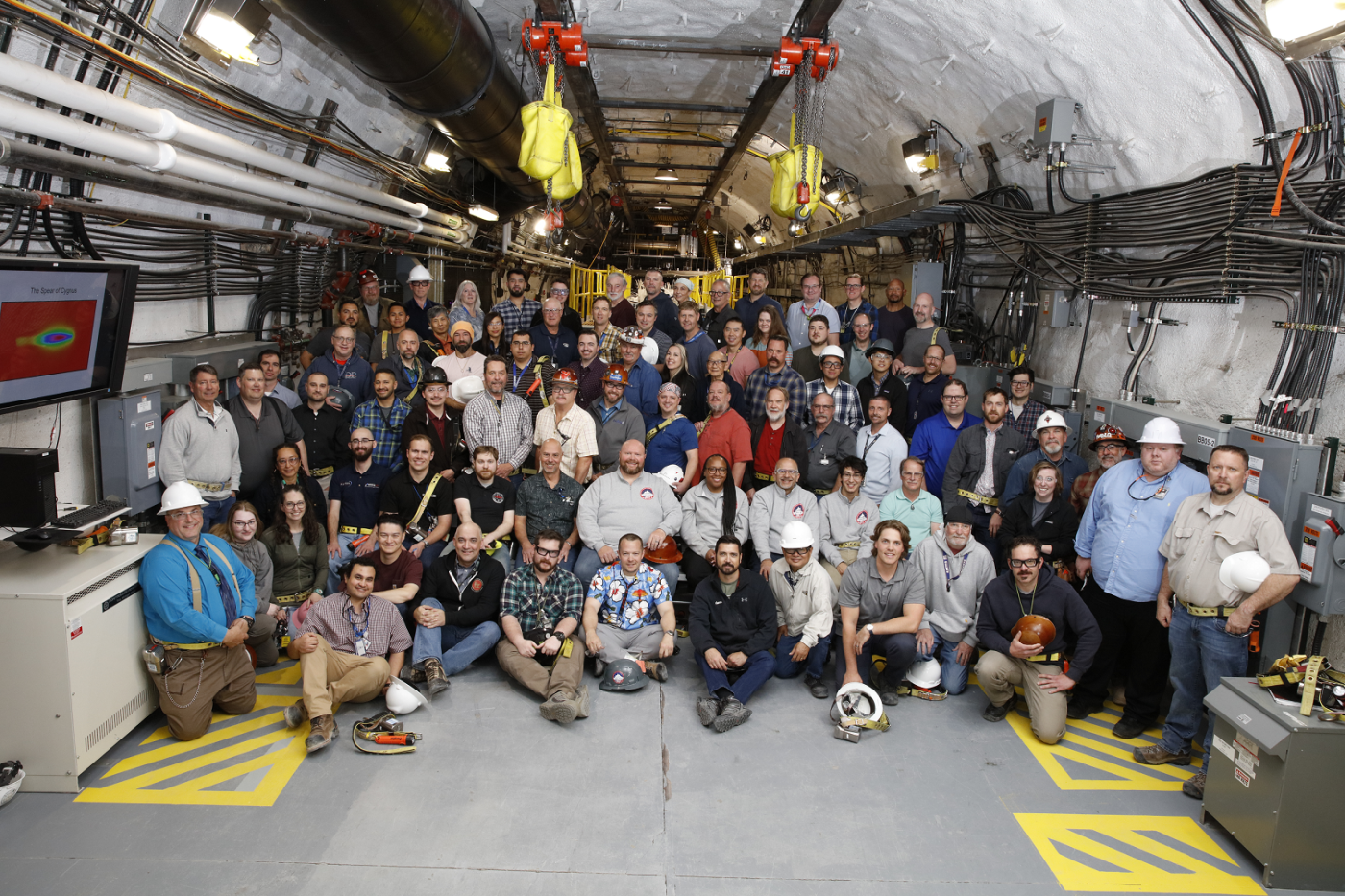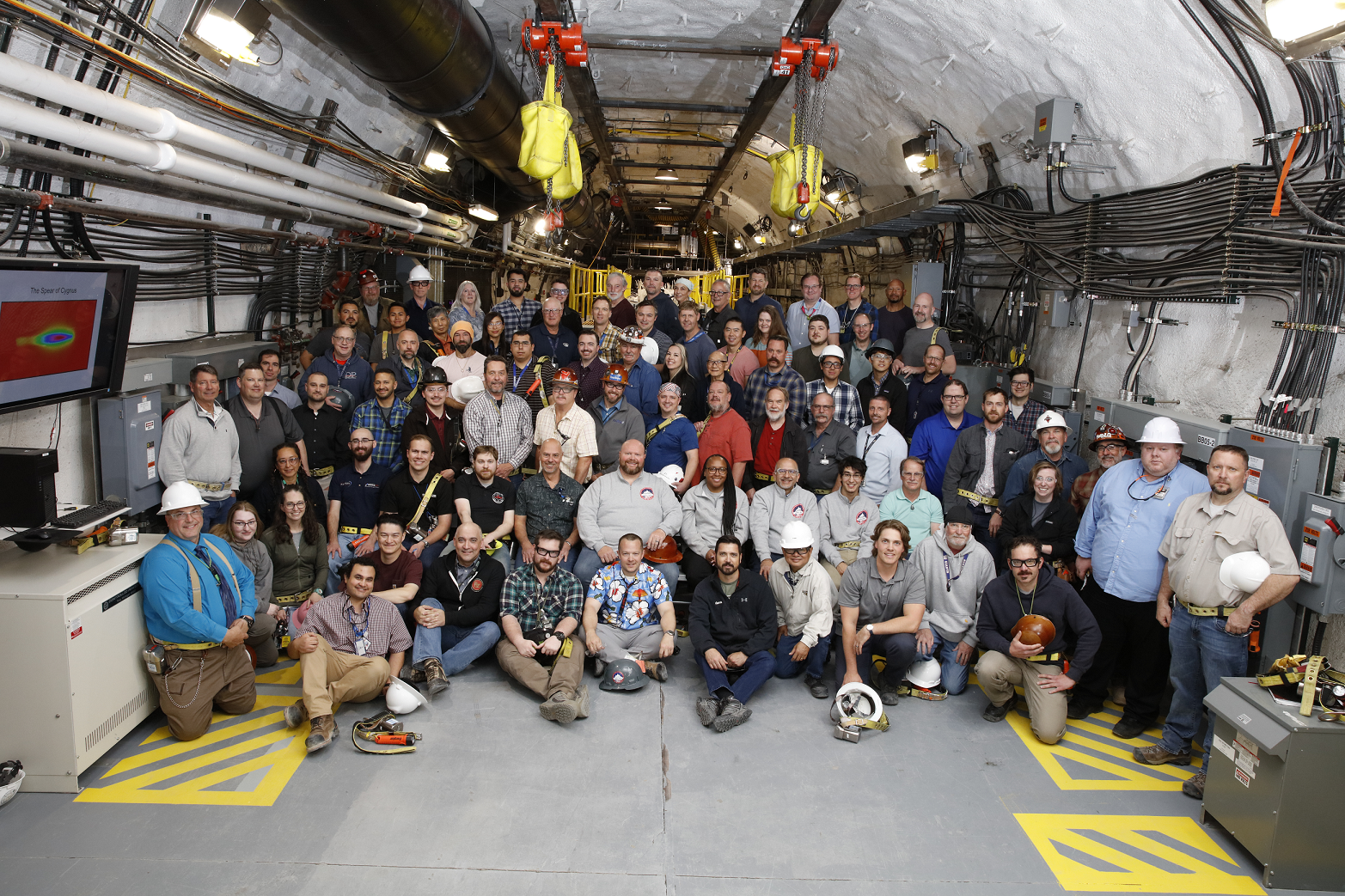
In May, the National Nuclear Security Administration (NNSA) successfully executed a subcritical experiment at Nevada National Security Sites’ (NNSS) Principal Underground Laboratory for Subcritical Experimentation (PULSE, formerly known as the U1a Complex) facility. This experiment, the first in the NIMBLE experiment series, was conducted in partnership with Lawrence Livermore National Laboratory (LLNL) and supported by Los Alamos National Laboratory (LANL).
The NIMBLE experiment series
The NIMBLE experiment series is a multi-year collaborative effort to support the NNSA’s modernization programs and stockpile stewardship mission. The subcritical experiments conducted within the series are designed to collect valuable information to support the safety, security, reliability, and effectiveness of America’s nuclear warheads, without the use of nuclear explosive testing. The Nuclear Security Enterprise will use the results of this experiment to improve its modeling and simulation capability, part of the science-based Stockpile Stewardship Program that NNSA has led for over 30 years.
Getting results
The experiment performed as predicted; consistent with the self-imposed moratorium on nuclear explosive testing that the United States has held since 1992, it did not form a self-sustaining, supercritical chain reaction, consistent with the zero-yield standard of the Comprehensive Nuclear-Test-Ban Treaty (CTBT). “Data was collected on over two hundred channels of instrumentation,” said NNSS’ NIMBLE Subcritical Experiment (SCE) Project Manager Corey Bishop. “Included is the first SCE data with an Asay window measurement technique, recently co-developed by NNSS’ Special Technologies Lab and LLNL. Preliminary results indicate high-quality data return.”
“The success of this subcritical experiment was made possible by collaboration across our enterprise, and our investments in science and technology,” said Dr. Marvin Adams, NNSA Deputy Administrator for Defense Programs. “As NNSA Administrator Hruby announced in June 2023, we plan to increase the frequency of these subcritical experiments so we can continue to gather important data on nuclear weapons materials, with no technical need for a return to underground nuclear explosive testing.”
NNSS SCE Diagnostic Manager and Principal Scientist Rand Kelly said, “The SCE program plays a vital role in our national security mission. These projects utilize personnel from across the NNSA labs, plants, and sites to capture data relevant to our nuclear stockpile. The Nimble SCE series data will provide critical information to the stockpile modernization program while also answering questions pertaining to our current stockpile. This successful execution is a testament to the teams who spent many consecutive months underground at PULSE, working side-by-side, and highlights the expertise that the NNSS brings to the table in fielding these kinds of experiments.”
Enhanced collaboration
As one of the most complex series of experiments ever designed and executed within the NNSA, NIMBLE would not have been possible without the extraordinary collaborative efforts of sites, agencies, labs and other partners across the country.
“I appreciate the tenacity of the NIMBLE team who overcame many challenges to field and execute this experiment,” said LLNL Weapon Physicist Garry Maskaly, a principal investigator working on the project. “I am continually impressed with the professionalism and skills of our key partners at NNSS. These teams and the capabilities they provide are a key part of our national deterrent and fulfilling the U.S. commitment to not return to nuclear explosive testing.”
NNSS NIMBLE Diagnostic Coordinator Ed Daykin said, “This experiment was only made possible through the dedicated and coordinated efforts of individuals representing all the contributing organizations. Professionalism and attention to detail by numerous integrated teams led to the acquisition of hundreds of channels of high-fidelity data on this very complex experiment.” He went on to add, “Included is the first SCE data with a novel momentum measurement technique recently co-developed by NNSS’ Special Technologies Lab in collaboration with LLNL,” referencing the data gathered with the Asay window.
Subcritical experiments: the past, present and future
The experiment was the 34th SCE performed by NNSA since 1992, when the United States began its self-imposed moratorium on nuclear explosive testing. NNSA Administrator Jill Hruby announced in June 2023 plans to increase the frequency of SCEs to continue to gather important data on nuclear weapons materials. The United States is preparing to conduct approximately three SCEs per year by the end of the decade.

